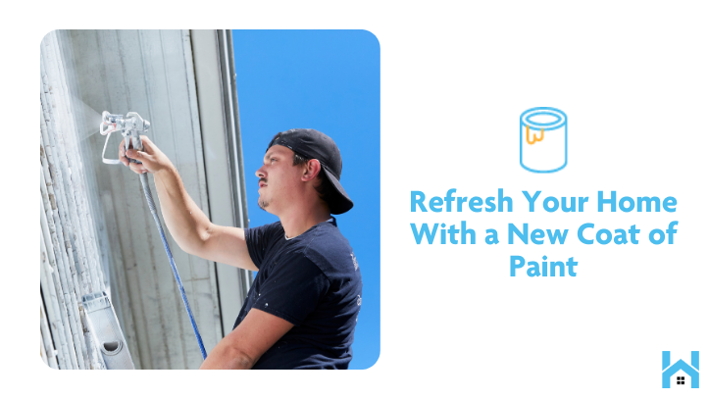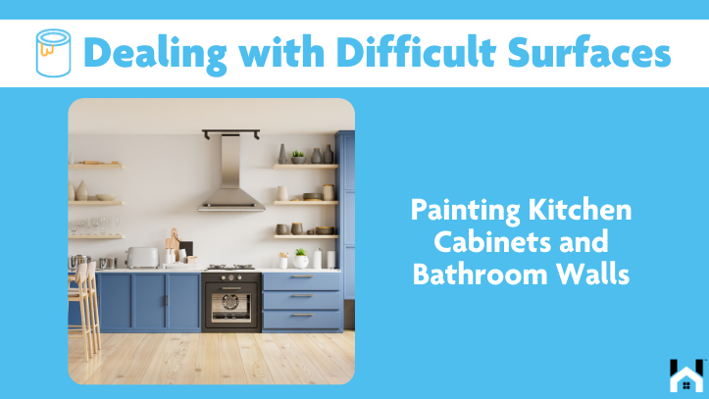As winter approaches, the exterior of your home encounters harsh conditions that can result in significant damage if not adequately protected. A quality coat of paint serves as a protective barrier, safeguarding your siding and trim from moisture, frost, and freezing temperatures. This article will discuss how exterior paint not only enhances your home's curb appeal but also provides vital protection during the winter months. We will identify the signs that suggest it may be time for a refresh and offer guidance on selecting the ideal paint for your specific climate and architectural style. Join us as we explore ways to ensure your home remains both beautiful and resilient in the face of the elements.
Key Takeaways:
· Protect your home from harsh winter weather by regularly maintaining your exterior paint, which acts as a protective barrier for your siding and trim.
· Look out for visual signs of paint damage, such as peeling or discoloration, and also check for hidden damage like mold or rot, to know when it's time for a fresh coat of paint.
· When choosing exterior paint, consider your climate and home style to ensure the best protection and aesthetic appeal. Match the paint to your home's architecture for a cohesive and lasting finish.
The Importance of Exterior Paint for Winter Protection
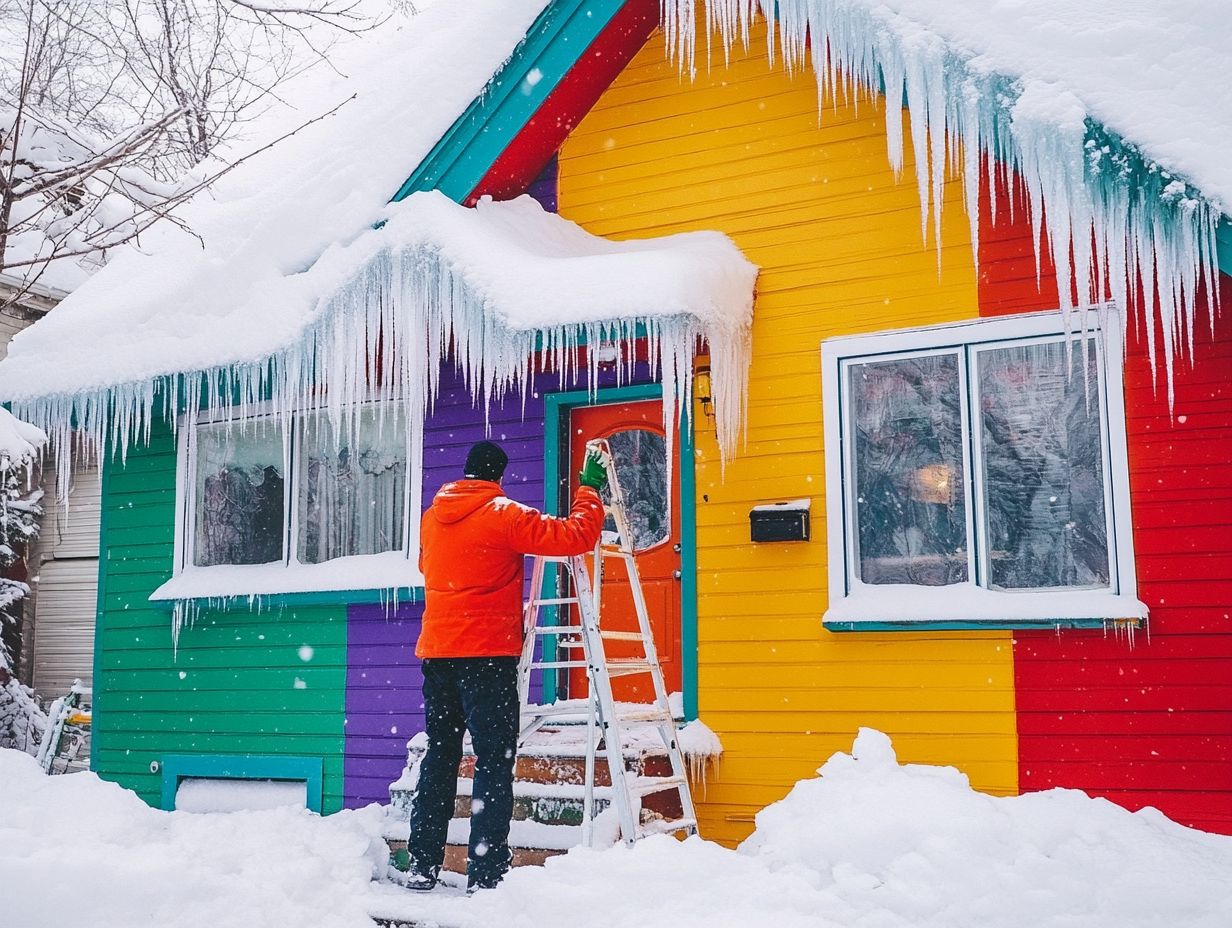
The significance of exterior paint for winter protection is crucial, particularly for homeowners in regions experiencing cold weather and freezing temperatures. The right paint can act as a weather-proof barrier, maintaining the structural integrity of your home.
High-quality exterior paint serves as a protective barrier against moisture damage and pest infiltration, thereby safeguarding the structural integrity of your home’s siding and trim. Weather conditions such as humidity levels and temperature fluctuations necessitate specialized paint formulations.
In locations such as Sonoma County, Indianapolis, and St. Louis, where temperature fluctuations and humidity levels can be quite extreme, it is essential to use the appropriate paint formulations. Professional painters often recommend products like Sherwin-Williams for their effective paint adhesion and durability under such conditions.
Hiring professional painters who are knowledgeable about these environmental factors ensures that your paint job can endure the harsh winter months, maintaining both aesthetic appeal and functionality. They understand the significance of paint adhesion, paint temperatures, and ideal temperature ranges for optimal application.
How Paint Protects Siding and Trim from Winter Weather
Exterior paint acts as the first line of defense for your siding and trim against the harshness of winter weather. It utilizes a specific paint finish designed to enhance moisture resistance and prevent moisture damage, even under freezing surface conditions.
Selecting the appropriate type of paint is essential, particularly when taking into account how cold temperatures can affect drying time and adhesion. For example, latex paints generally require warmer conditions to dry effectively, ideally within a range of 50°F to 85°F. On the other hand, oil-based paints may perform slightly better in cooler temperatures, but they still benefit from mild weather, which supports the curing process.
When temperatures fall below 50°F, the paint can become thick and gummy, resulting in poor adhesion and extended drying times. Therefore, individuals embarking on painting projects should not only refer to their paint’s specific guidelines but also keep an eye on local weather conditions, aiming for days when temperatures consistently exceed these thresholds to achieve optimal results.
Why Regular Maintenance is Key
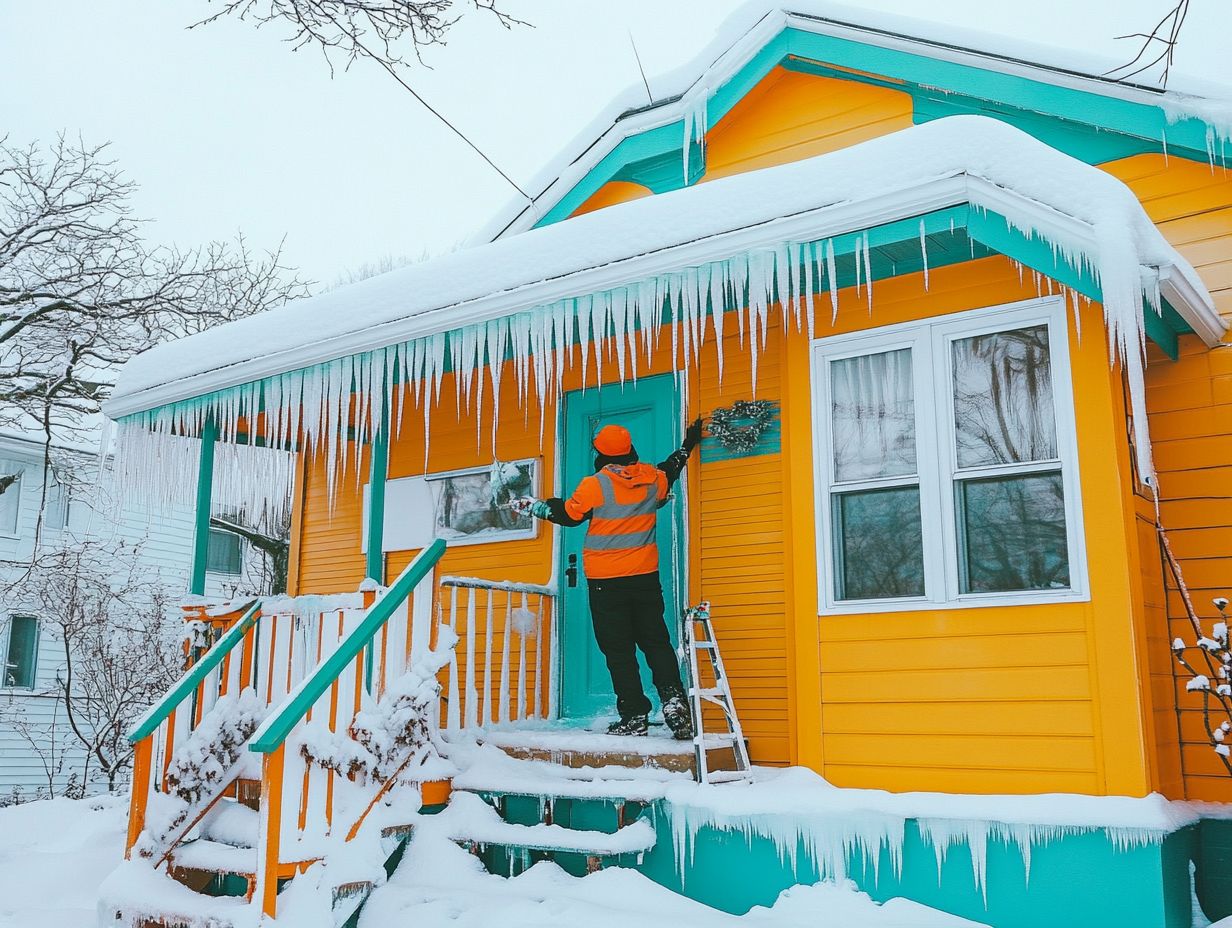
Regular maintenance plays a vital role in preserving the effectiveness of exterior paint, ensuring the longevity and durability of your home’s protective layer against environmental factors.
By routinely inspecting for signs of peeling or fading, homeowners can identify potential issues early on, thus preventing extensive damage and costly repairs down the line. This proactive approach not only helps maintain the aesthetic appeal of the property but also supports its market value.
Many homeowners might overlook the impact of high-VOC (volatile organic compounds) content present in some paints. These substances can considerably degrade indoor air quality and pose health risks to occupants. Opting for low-VOC paints enhances energy efficiency and pest protection.
Opting for paints with low or no VOCs can enhance pest protection and contribute to a safer, more comfortable living environment overall. Ensuring your exterior surfaces are covered with appropriate formulations can significantly bolster your home's defenses.
Signs Your Home Needs a Fresh Coat of Paint
It is essential to recognize the signs that indicate your home needs a fresh coat of paint. Addressing these signs promptly can help prevent further damage and maintain the aesthetic appeal of your property. Look for warning signs such as paint blistering due to moisture infiltration or UV radiation exposure.
This is particularly important because temperature fluctuations can worsen issues such as moisture infiltration and peeling paint.
Visual Indicators of Paint Damage
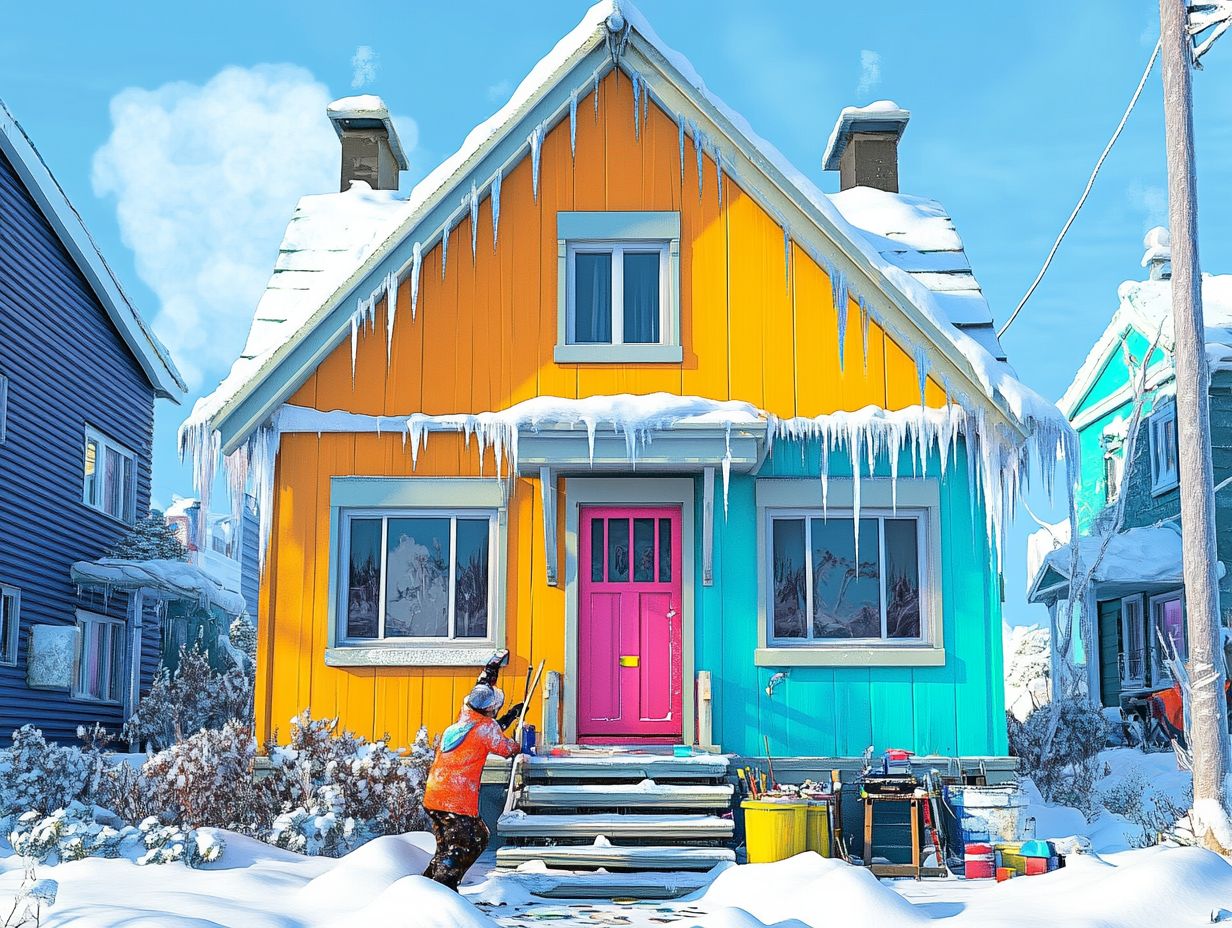
Visual indicators of paint damage, such as color fading and cracking, serve as important signs that the exterior surfaces of your home may be compromised and are no longer providing an effective protective barrier.
Recognizing these indicators is the first step in maintaining the longevity of your home’s exterior. For example, peeling paint can suggest moisture intrusion, which may eventually lead to rot in wooden surfaces, while blistering often indicates trapped moisture beneath the paint layer.
Each type of damage has its own implications; color fading can not only reduce curb appeal but also signal that the existing paint is failing to protect the underlying material.
Assessing the severity of these issues is crucial—minor surface imperfections may only require touch-ups or a maintenance coat, whereas significant damage could demand a comprehensive repaint with carefully chosen products tailored for the specific environment to ensure optimal durability and protection.
How to Check for Hidden Damage
Checking for hidden damage is crucial for maintaining the longevity of your exterior paint, as issues like moisture damage and pest infiltration can severely compromise the structural integrity of your home.
To effectively assess the condition behind painted surfaces, it is important to conduct a thorough inspection. Begin by examining areas that are prone to moisture accumulation, such as eaves, basements, or around windows, where water may seep in unnoticed.
Look for signs of discoloration or bubbling paint, as these can indicate underlying moisture problems.
Additionally, checking for pest activity, such as woodpecker holes or termite trails, is essential to prevent further damage. Once you identify any potential issues, proper surface preparation becomes key before repainting.
Cleaning, sanding, and priming the surfaces appropriately will ensure optimal adhesion of the new paint, ultimately enhancing its durability and overall appearance.
Choosing the Right Exterior Paint for Your Climate and Home Style
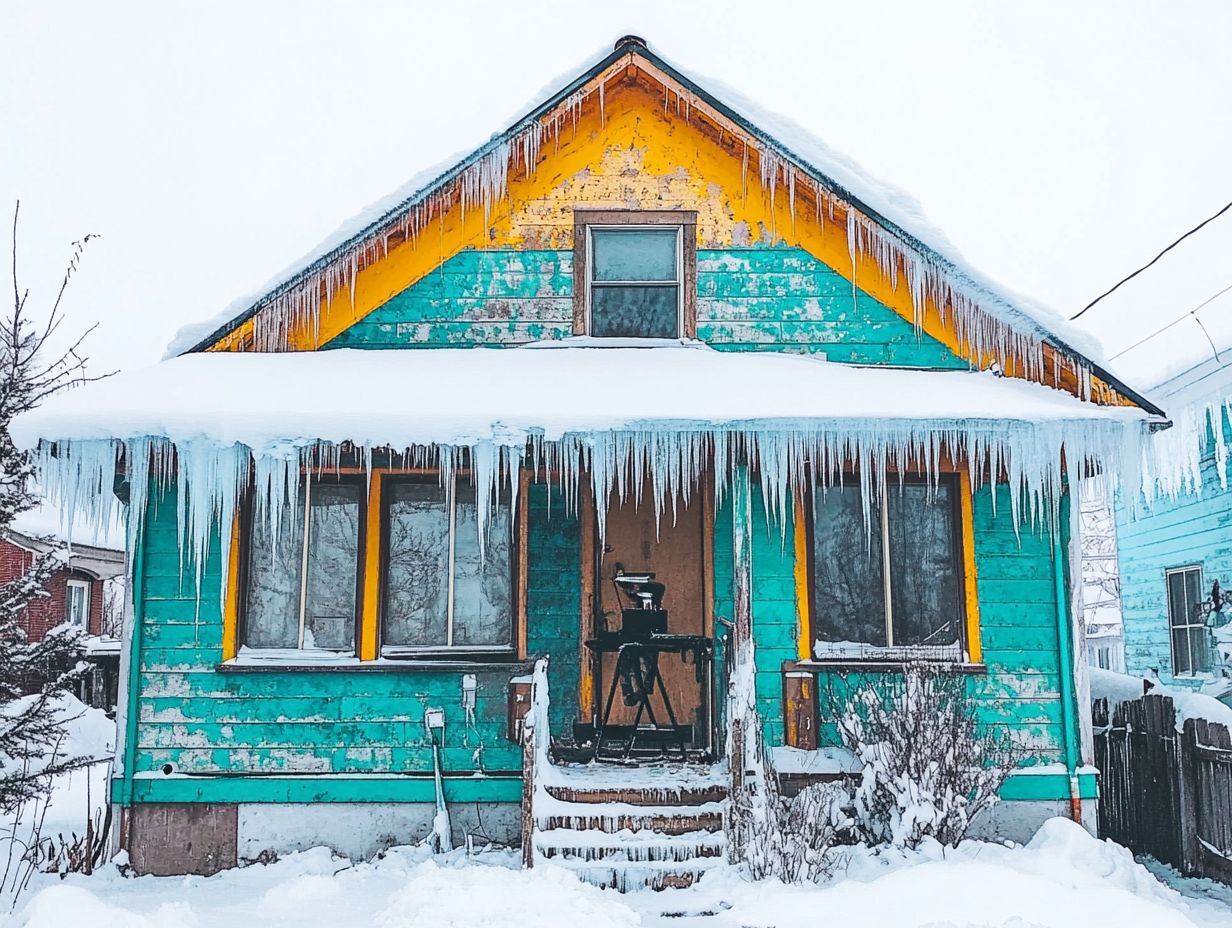
Selecting the appropriate exterior paint for your climate and home style requires an understanding of how different paint formulations respond to various environmental factors.
This ensures that you achieve both aesthetic appeal and functionality for your home.
Considerations for Different Climate Conditions
When selecting exterior paint, it is essential to consider various climate conditions, such as cold weather and fluctuating humidity levels, to ensure moisture resistance and long-term durability. Consulting temperature recommendations from manufacturers can provide guidance for optimal application conditions.
During the winter months, paying attention to specific temperature recommendations is crucial, as most paint formulations tend to perform best when applied within a certain range, typically between 50°F and 85°F. This ensures that the paint's weather-proof properties are fully activated.
In colder conditions, opting for quick-dry latex paint can be particularly advantageous, as it dries more rapidly and remains workable even when temperatures dip. This type of paint not only helps achieve a smooth finish but also minimizes the risk of freezing before it sets properly.
Being aware of upcoming temperature changes can assist homeowners in planning their painting projects, ensuring optimal adherence and longevity of the paint job.
Matching Paint to Home Style and Architecture
Matching paint to your home's style and architecture not only enhances its aesthetic appeal but also ensures that the selected paint finish complements the overall design.
Incorporating the unique features of different architectural styles can create a cohesive and inviting atmosphere. For example, a classic Victorian home may benefit from muted pastels or rich jewel tones, while a modern minimalist design often thrives with neutral palettes and sleek finishes.
It is essential to understand how color shades interact with architectural details such as trim, moldings, and materials. The choice of paint finishes—whether matte, satin, or glossy—can significantly influence texture and depth, ultimately enhancing the visual interest of the space.
By thoughtfully selecting colors and finishes that reflect the character of the home, homeowners can achieve a harmonious and stylish look that stands the test of time.


